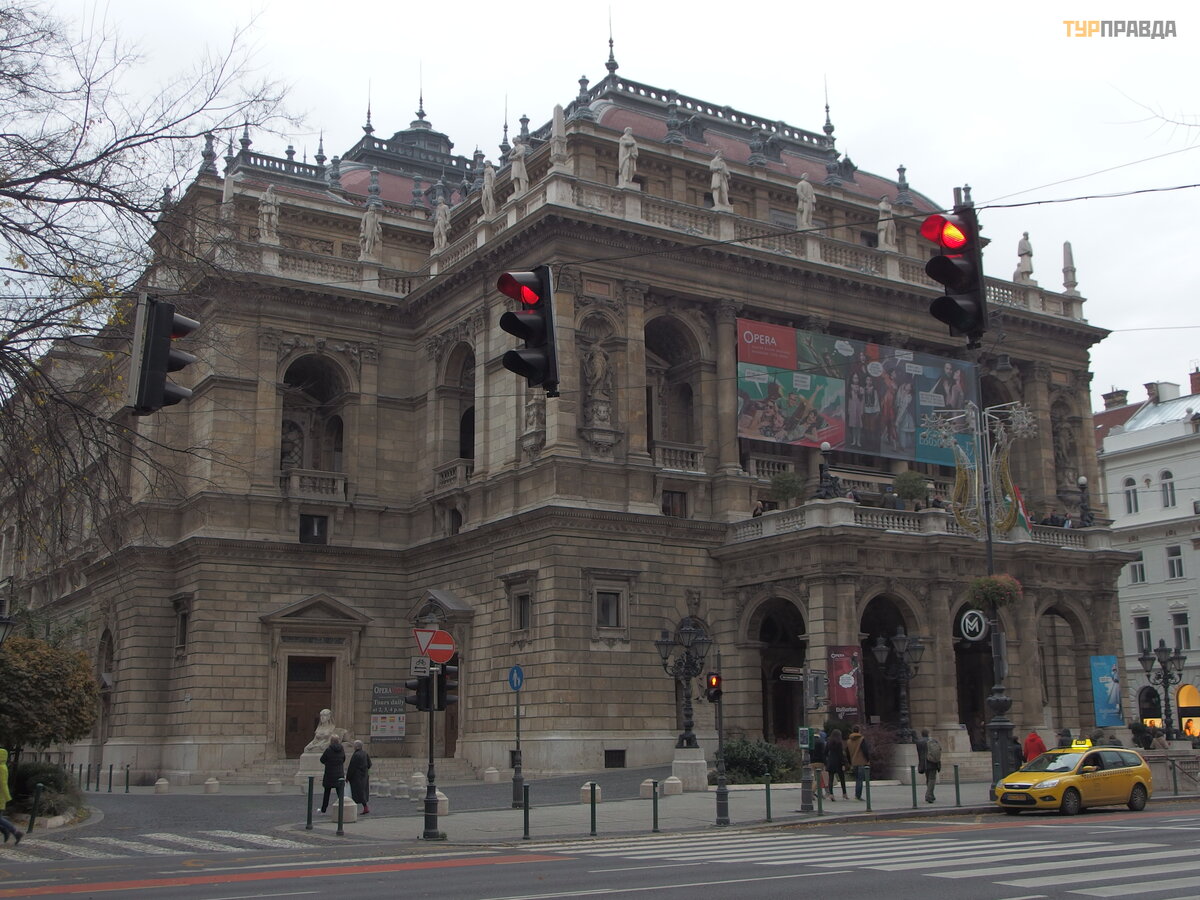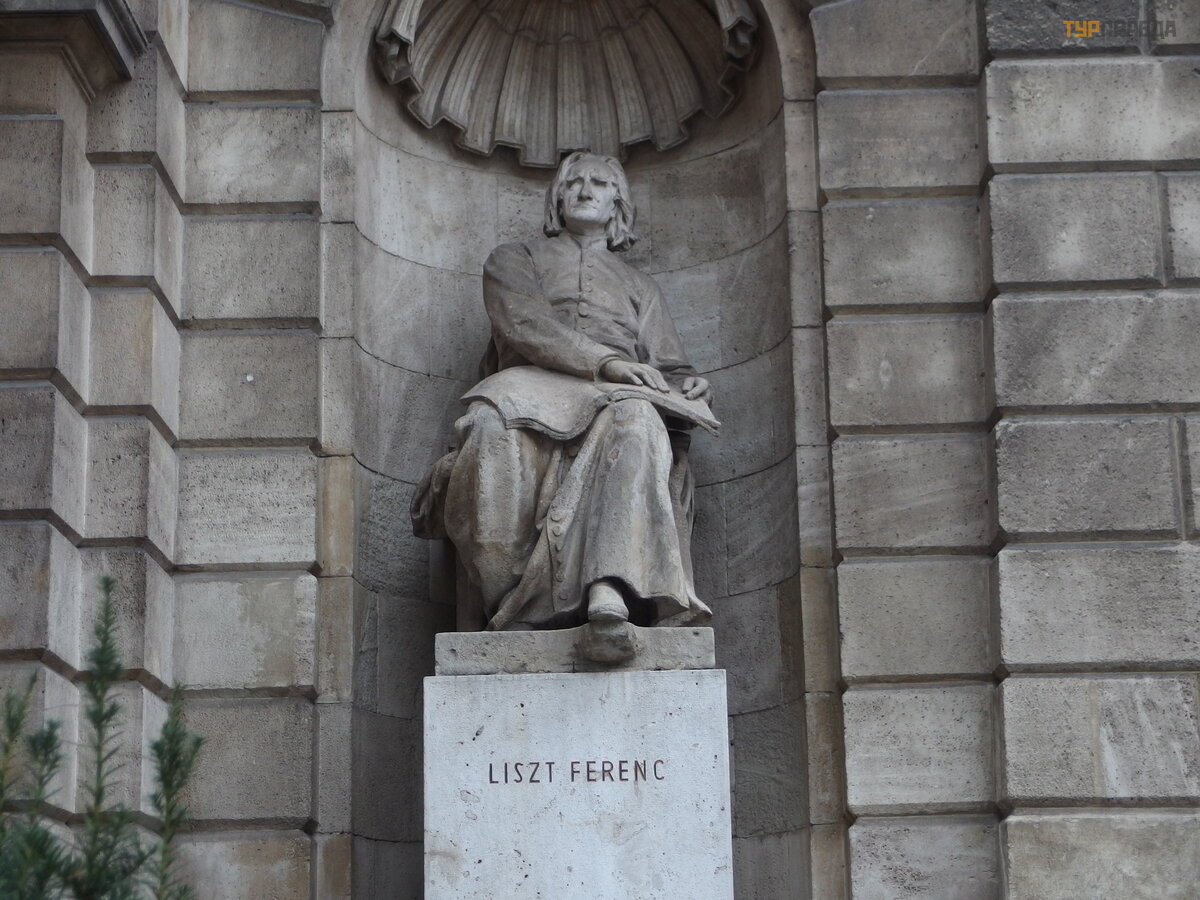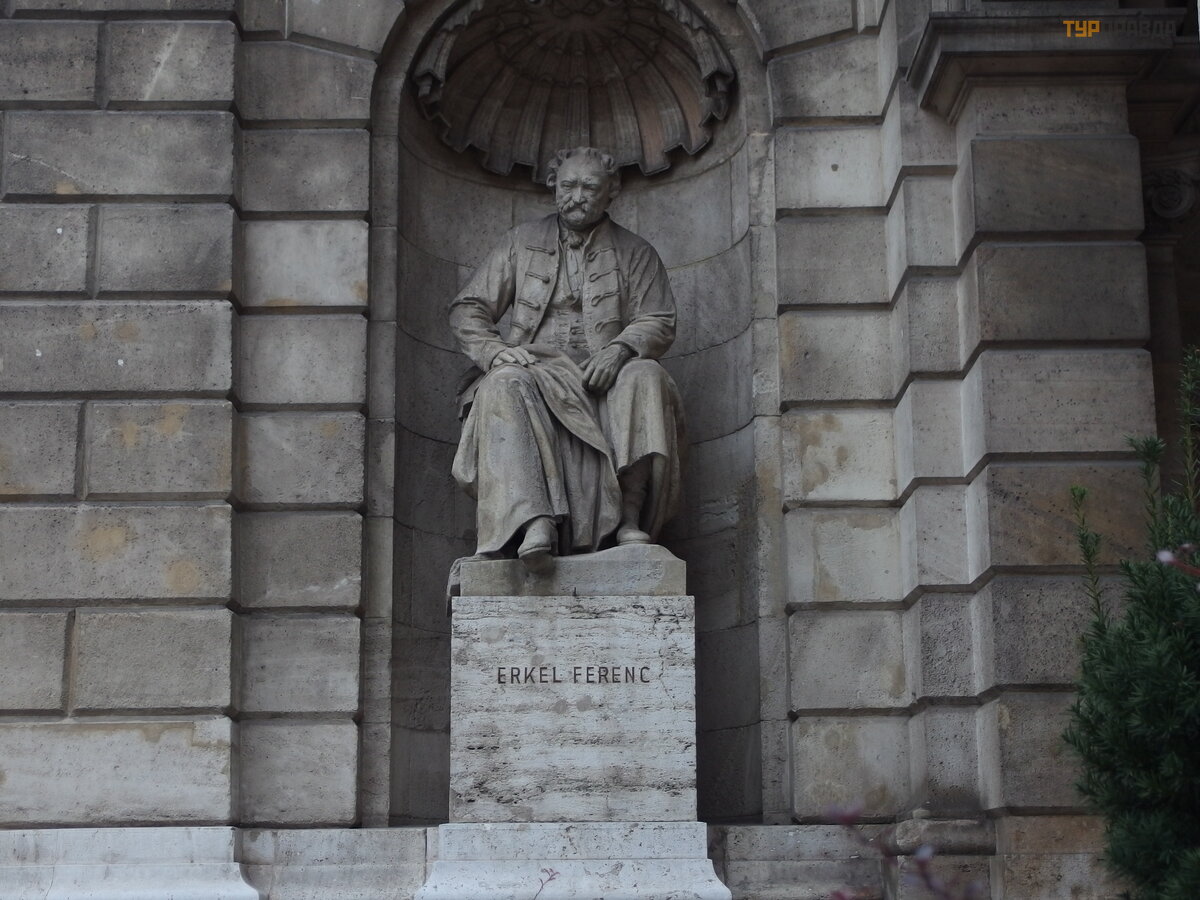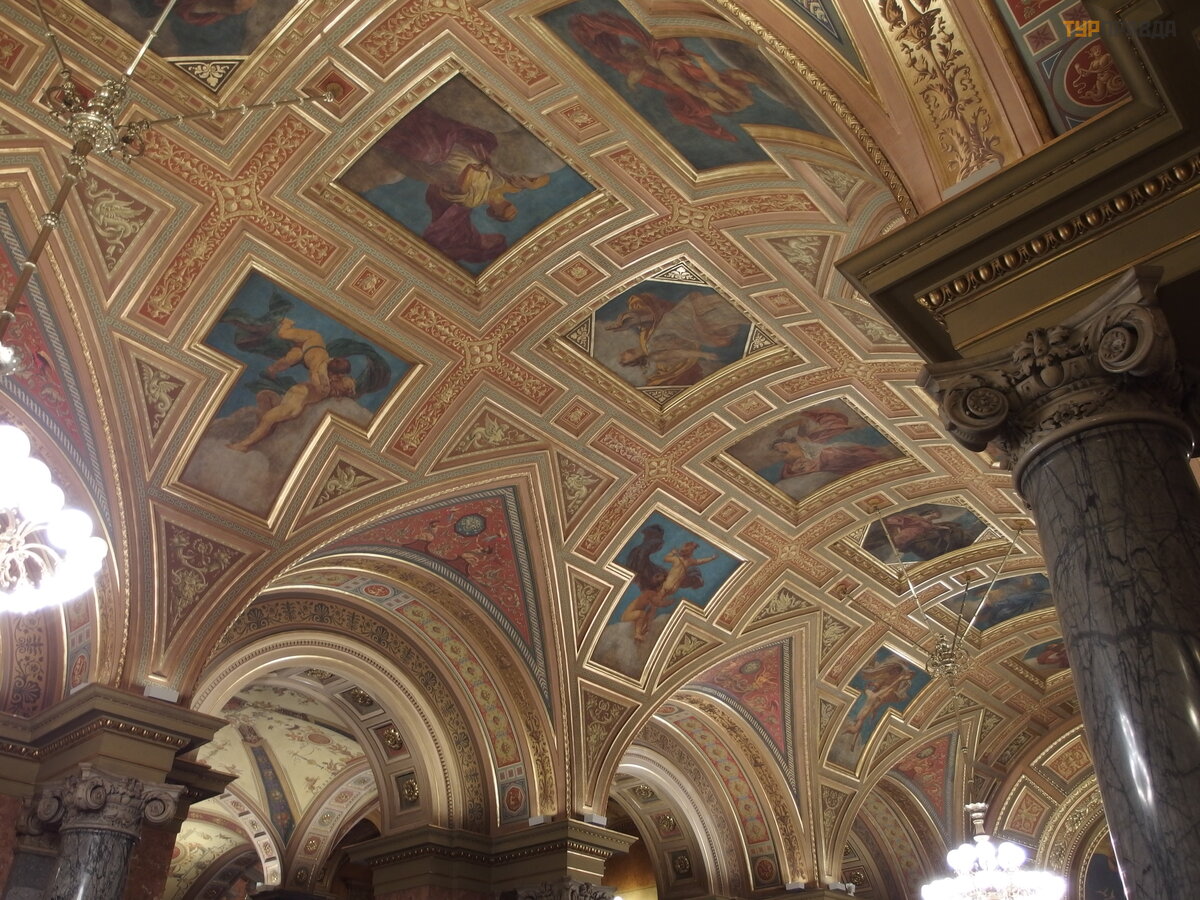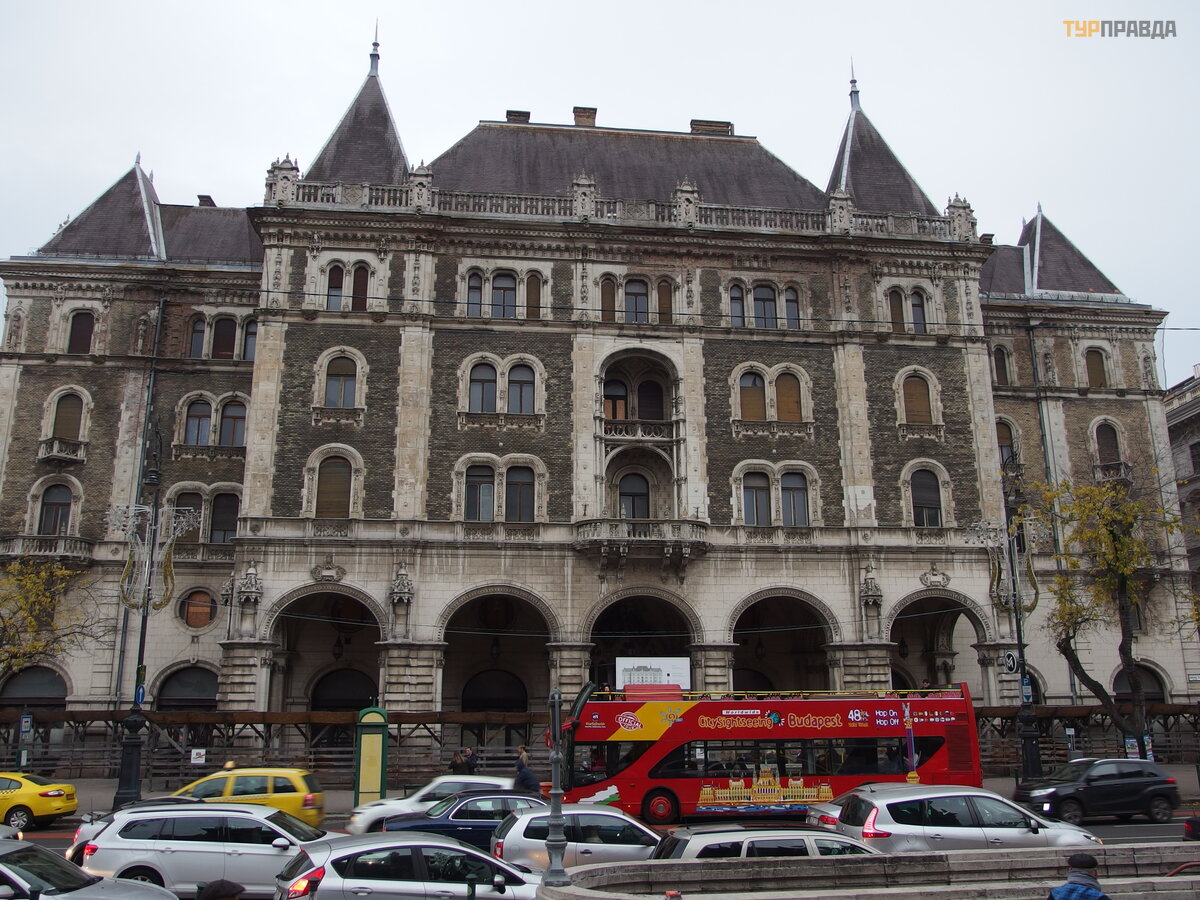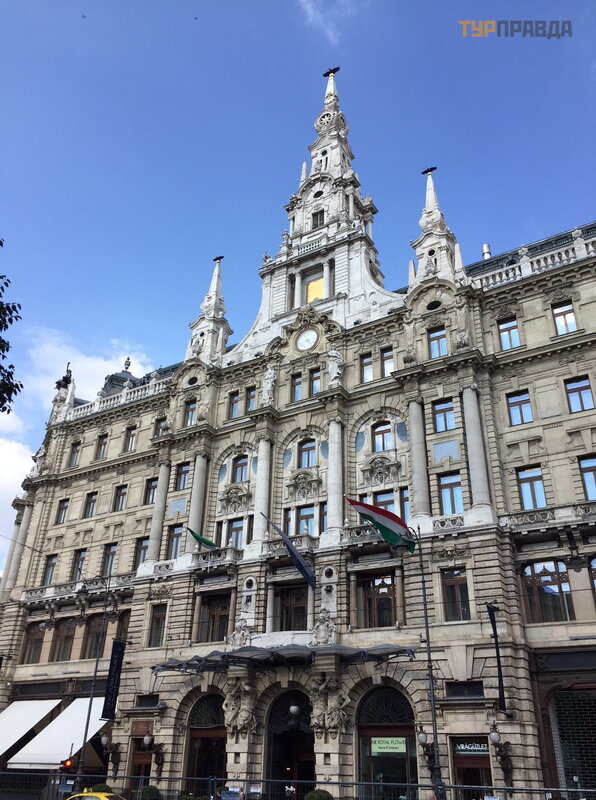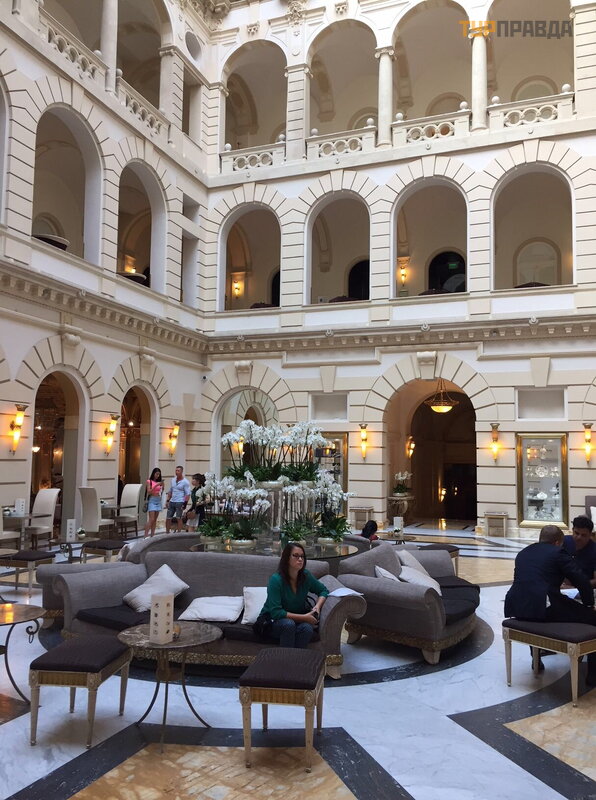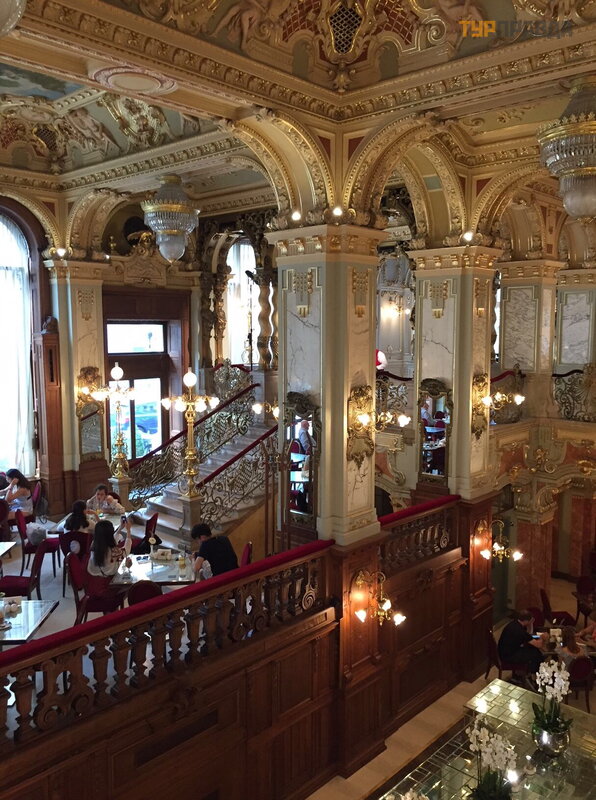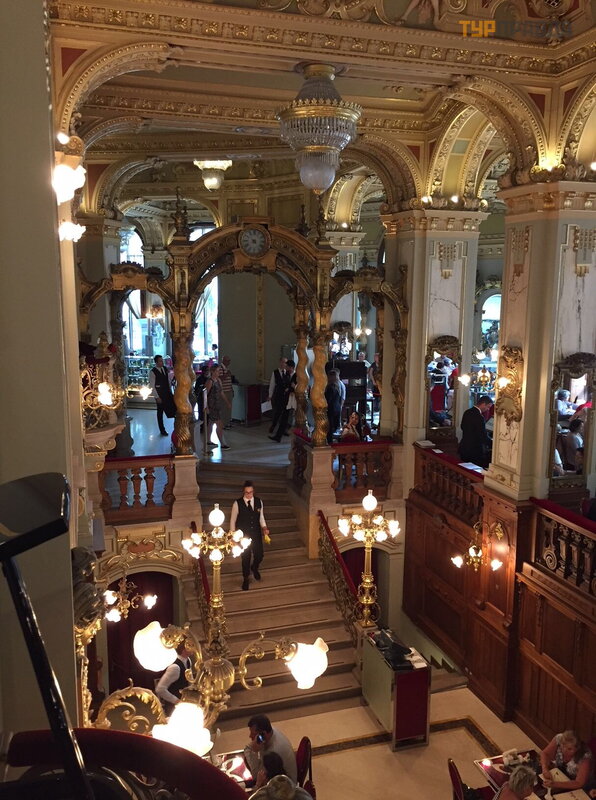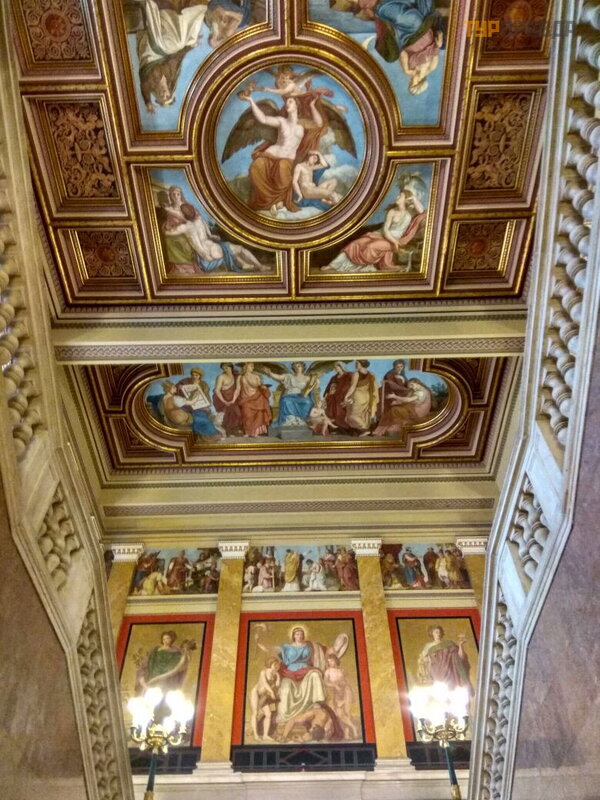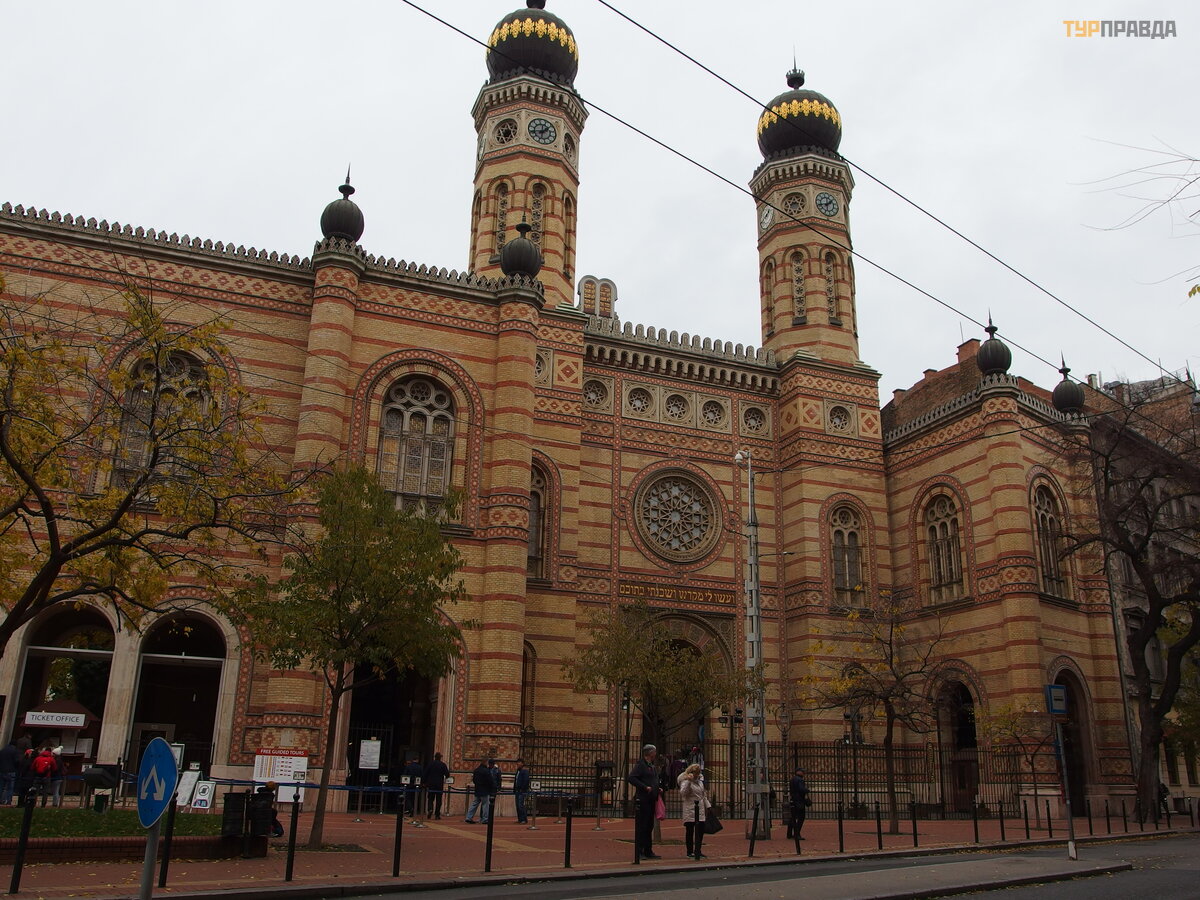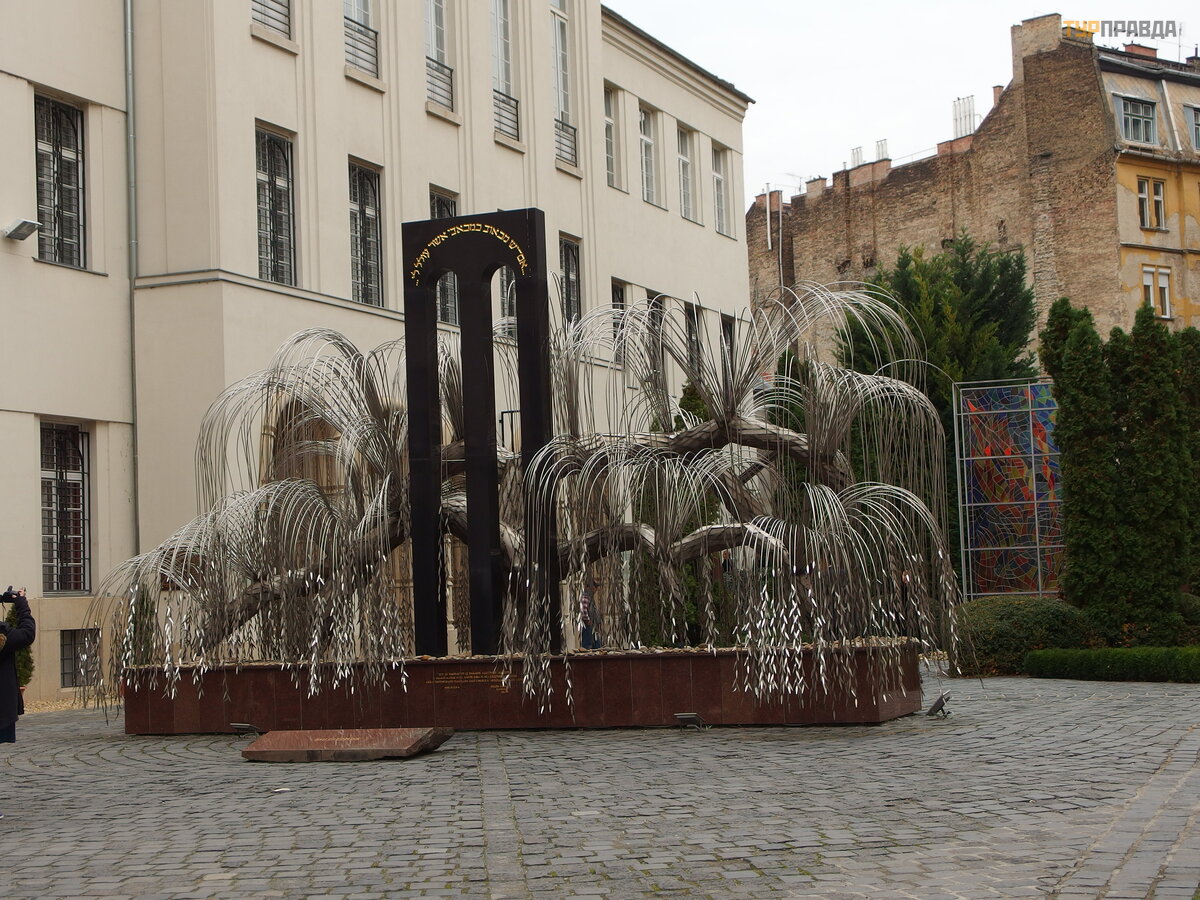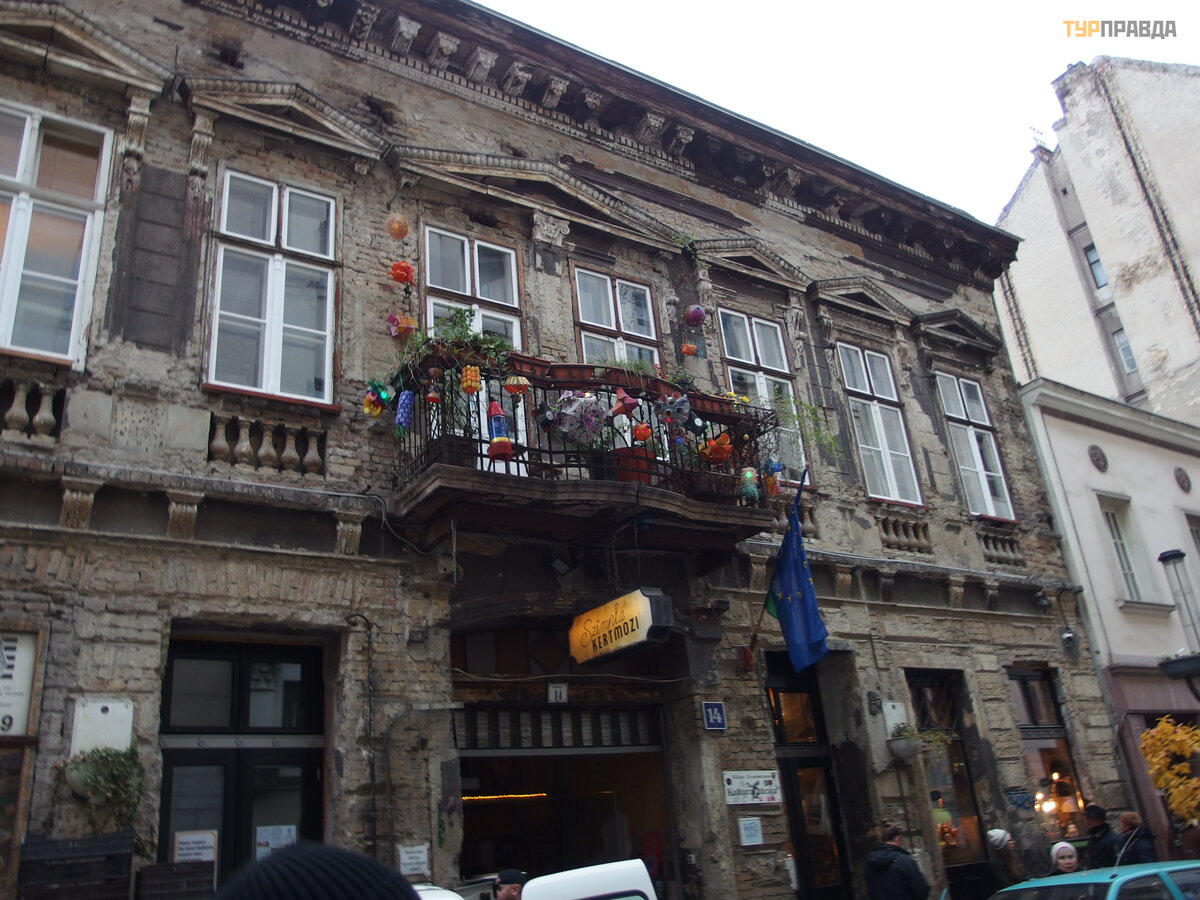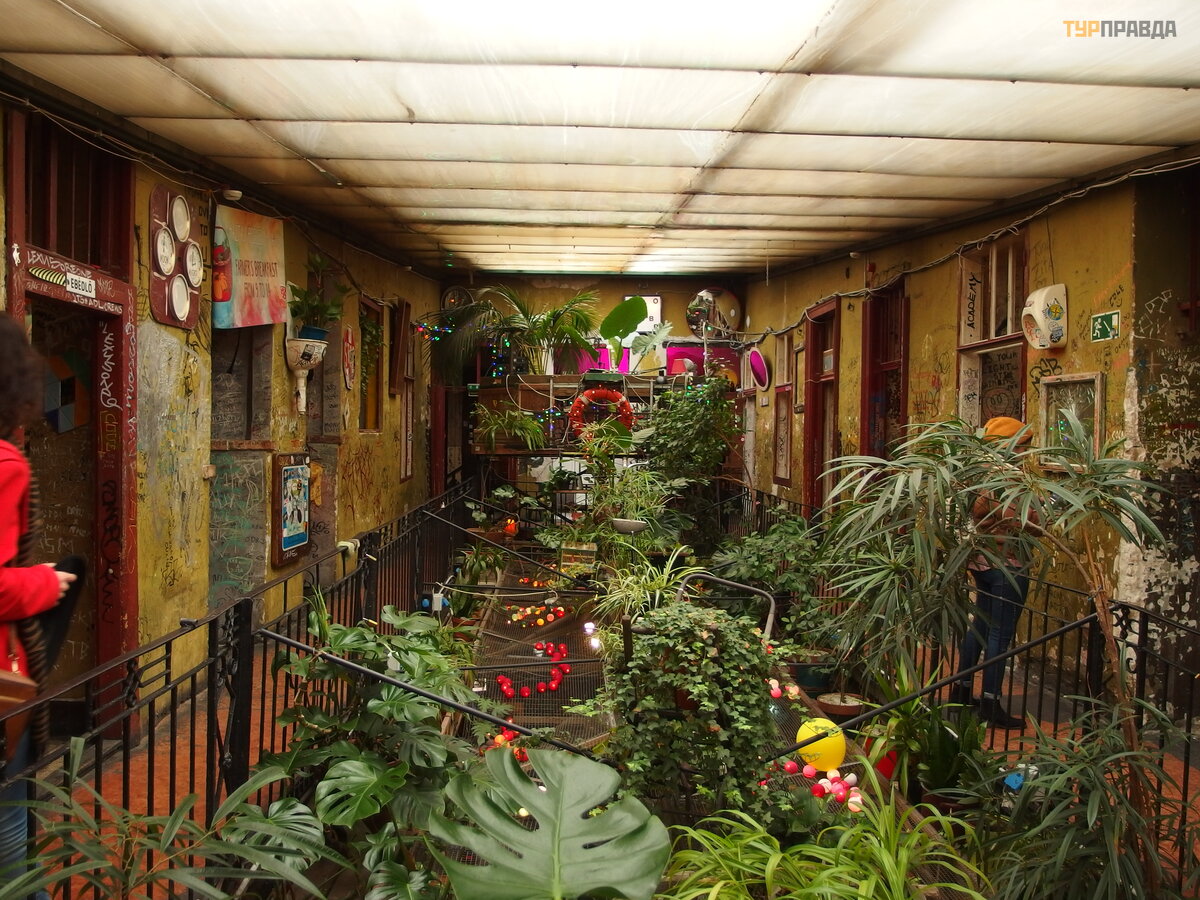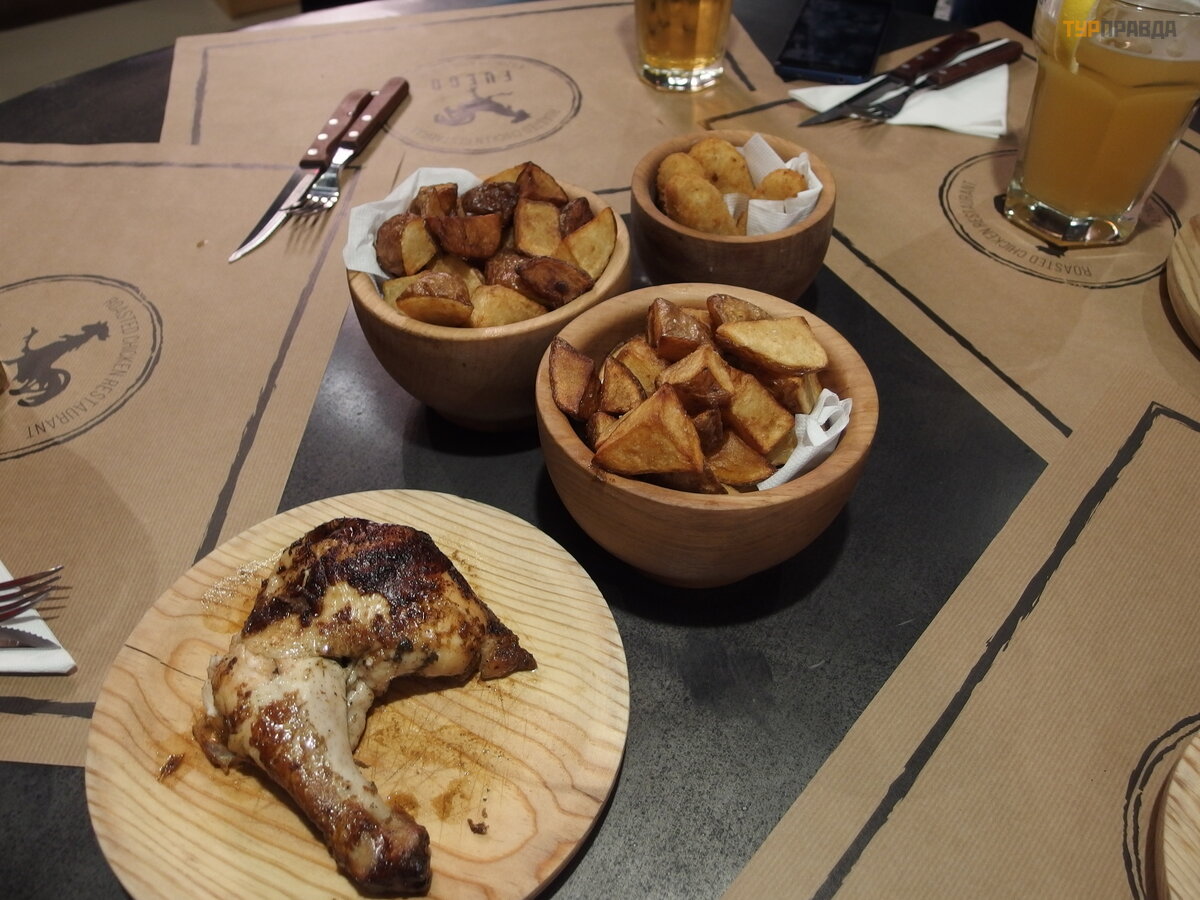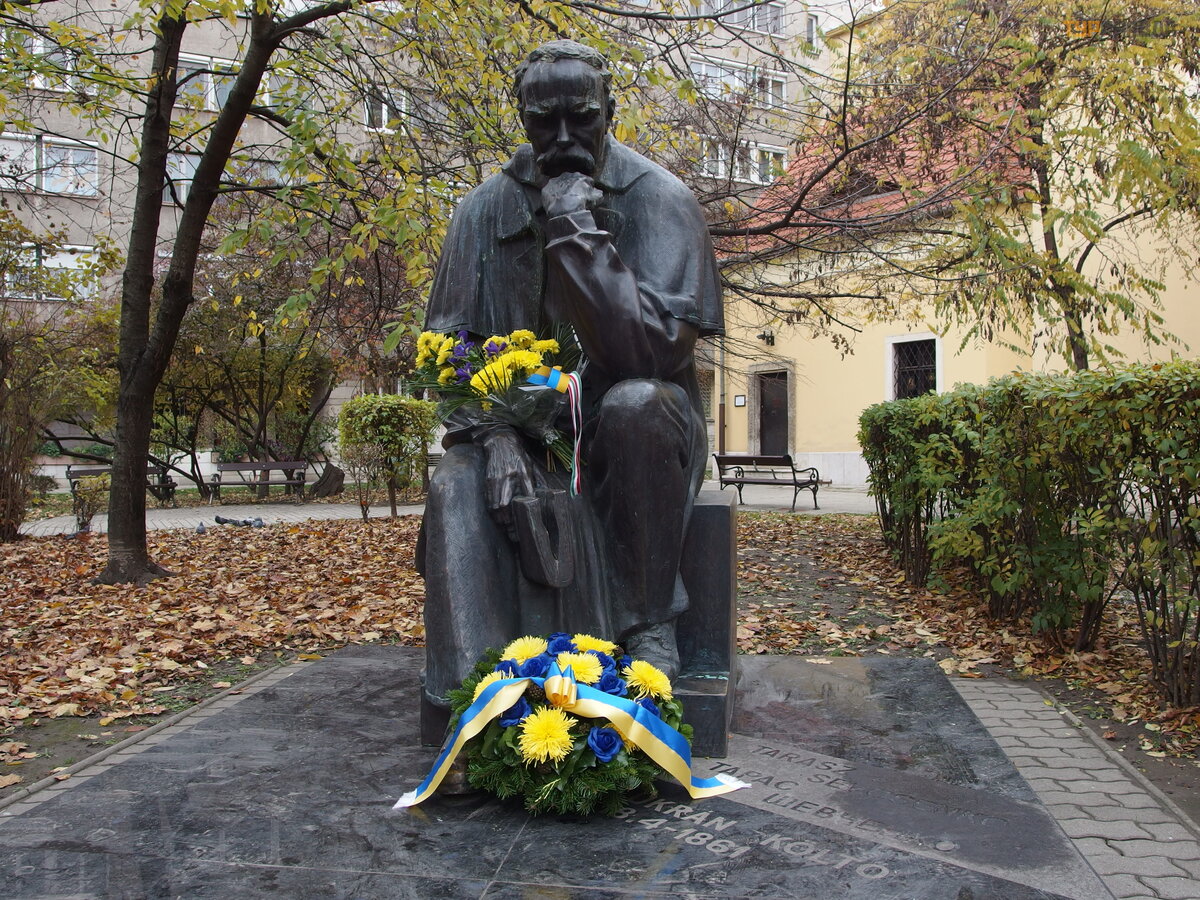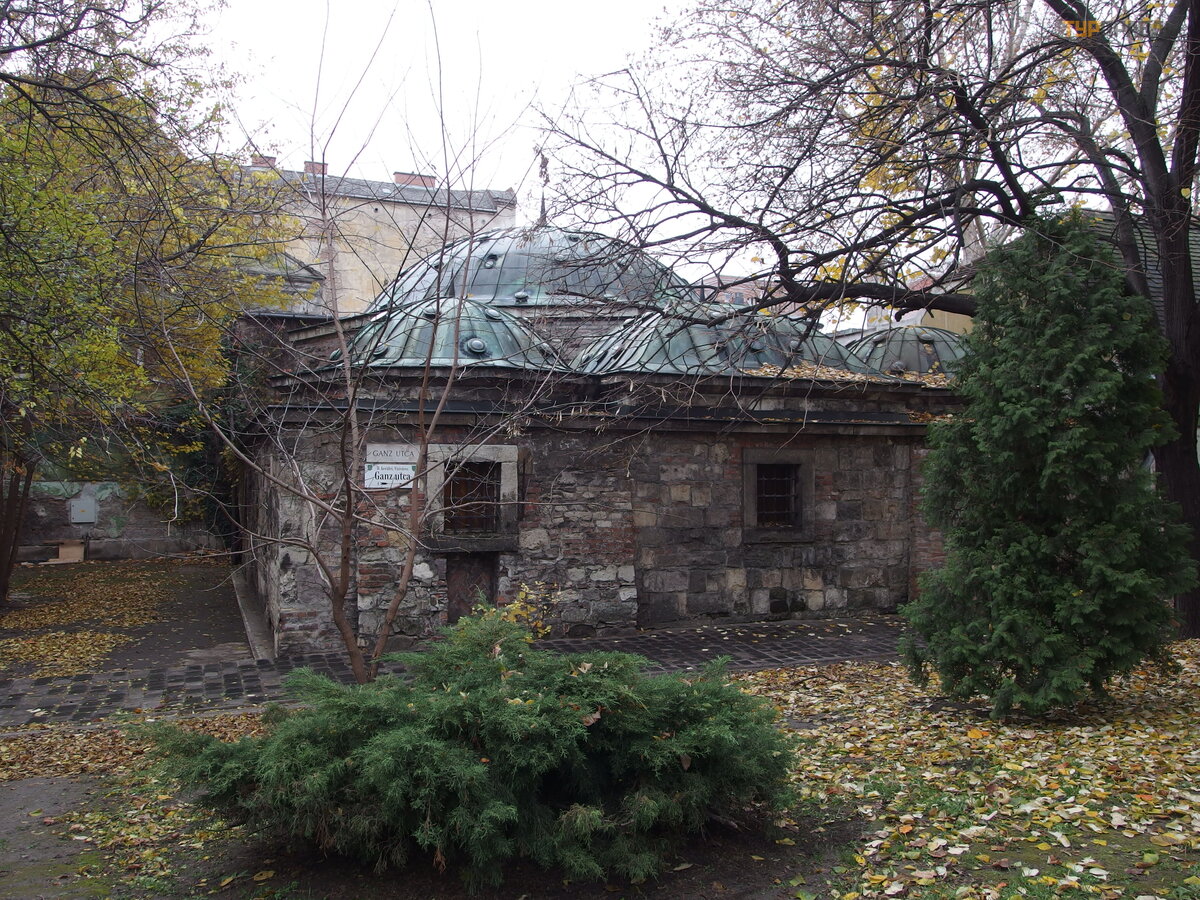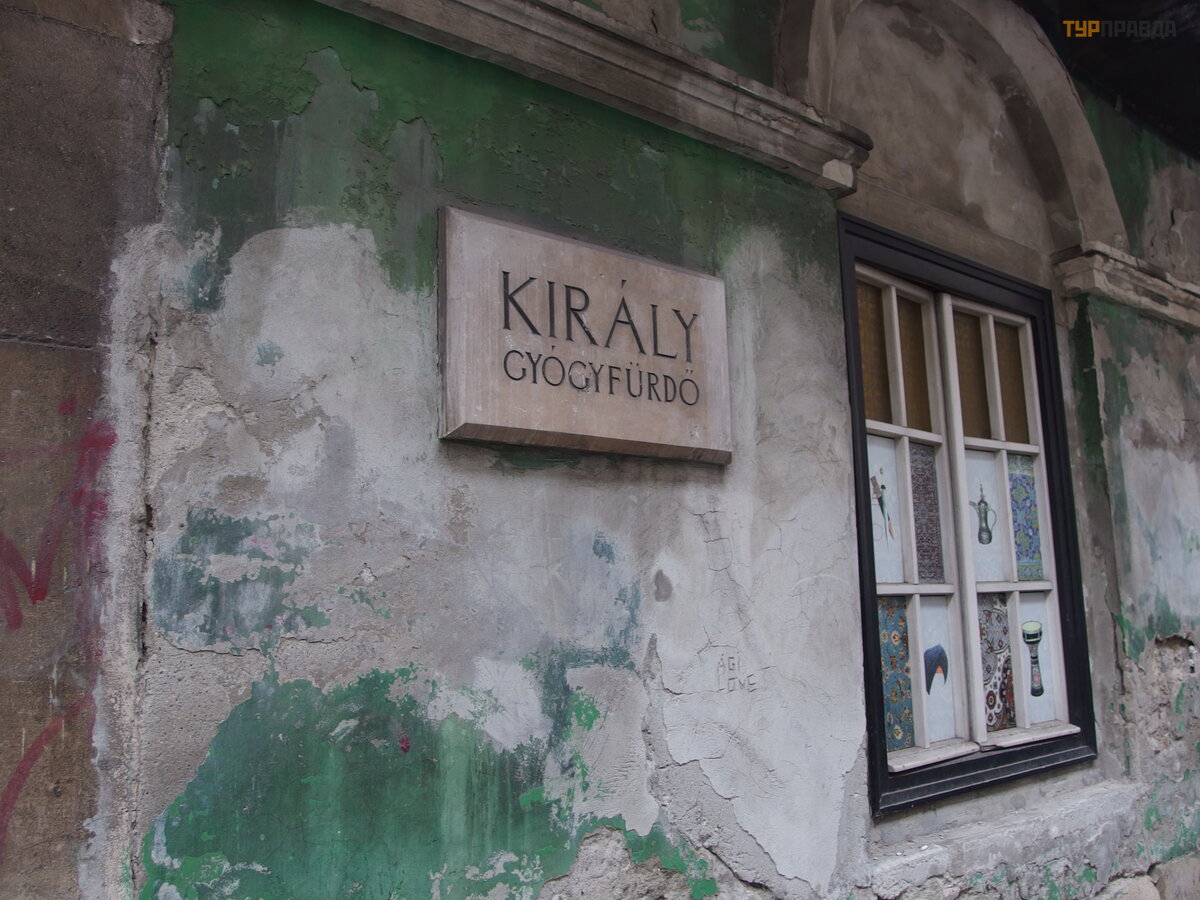Seven colors of Budapest. Continuation. Yellow color
The seven colors of Budapest. Start. The color is red. Color orange >>>
The color yellow is international.
This day's itinerary started from St. Stephen's Basilica along Andrá ssy Avenue. It is named after Gyula Andrá ssy Sr. (1823-1890), Minister of Foreign Affairs and Prime Minister of that era, who made great efforts to turn Budapest into a world-class city. Andrá ssy Avenue and its surroundings represent a single architectural ensemble of the late 19th century. Here are the best examples of eclectic architecture, among which the Opera House stands out with its special beauty, as well as many magnificent villas, former tenement houses with cozy courtyards decorated with sculptures and fountains. However, not only these buildings deserve attention, but also the thorough planning of the avenue. This two-and-a-half-kilometer-long main thoroughfare was built on the model of French boulevards. Sometimes this wide avenue is called the Champs Elysees of Budapest.
The building of the Hungarian State Opera House (or the National Opera) was built by the famous Hungarian architect Mikló s Ybl, who designed the dome of St. Stephen's Basilica. The neo-Renaissance opera house was opened in 1884. This building is often compared to the Vienna Opera, which was built a little earlier, but looks much more modern. Actually, the Budapest Opera was built in such a way that it would not be inferior in beauty to other famous opera houses in European capitals. The construction of the Budapest Opera lasted almost ten years (construction began in 1875 and ended in 1884) and cost a pretty tidy sum, most of which was allocated by Emperor Franz Joseph. He personally attended the opening ceremony, which took place on September 27.1884. At the entrance, visitors are greeted by sculptures of two prominent Hungarian composers, Franz Liszt (on the right). . .
. . . and Ferenc Erkel (left) (the composer who created the first Hungarian opera and the author of the Hungarian anthem).
Both composers personally posed for the sculptor. In 1872, on the initiative of two great musicians, a committee was created to lead the construction of an opera house in the city. An interesting painting under the arches of the Opera at the entrance to the building: In the niches at the corners of the facade there are muses: love poetry (Erato), dance (Terpsichore), comedy (Thalia) and tragedy (Melpomene). On the top balustrade are images of famous composers.
The interior of the Budapest Opera House is no less chic: huge chandeliers, a ceiling decorated with frescoes by Karoly Lotz, a foyer with marble columns, bright frescoes and a wide front staircase. The painting of the dome, depicting Apollo on Mount Olympus, was made by Karoy Lotz. Bertalan Szekely and Mor Tan also worked on the interior design. Entrance to the lobby is free.
Opposite the building of the Hungarian Opera there is also a very interesting building from an architectural point of view - the Drechsler Palace (house No. 25 on Andrá ssy Avenue) with arches, windows trimmed with light ornaments, turrets.
The palace was built in 1882 according to the design of Eden Lechner (Ö dö n Lechner) and Gyula Partos (Gyula Pá rtos). At the turn of the 20th century, the first floor of the building was occupied by the Drechsler cafe, hence its name. At the same time, it was originally built as a residential building for the Hungarian Railway Pension Fund, and then its premises were given to the State Ballet School. And if you walk further along Andra Avenue, you can get to Franz Liszt Square, where a monument to the composer by Laszlo Marto (or Marton) (1986) is erected. Very cozy square with many cafes.
The next location worth visiting is the New-York Palace Hotel (1895, Alaios Heismann). Built in Art Nouveau style with Neo-Renaissance elements. At all times this building was famous, first of all, for its cafe with magnificent interiors. Since its opening, it has become the most popular meeting place for the rich and famous. There is a legend that on the opening day, someone from the local bohemia threw the key to the establishment into the Danube so that it would remain open both night and day. Many famous writers, poets and journalists liked to visit here, so over time a literary society was formed. Its members at the tables led discussions, which were then reflected in the pages of newspapers and books.
Next, go to Luisa Blaha Square (Blaha Lujza ter) – Another iconic place in Budapest. The National Theater once stood here, it was demolished in 1964 during the construction of the metro. The theatrical past is preserved in the name of the square, which bears the name of the legendary Hungarian actress Lujza Blaha (1850-1926), who lived here. Her popularity was so great that one day, at her request, Emperor Franz Joseph pardoned a group of recruits sentenced to death for the brutal murder of an officer.
Louisa Blahi Square crosses Rakoczi Avenue. Further along Rakoczi Avenue we return in the direction of the Astoria Hotel. And we go out to the Great Synagogue and find ourselves in the Erzhbet quarter.
The northern border of the quarter, named after Empress Elisabeth, beloved by the Hungarians, runs along Kiraly Street, in Hungarian - Erzhebet. Erž ebetvá ros is distinguished by extremely dense buildings. In the 1930s, the authorities thought about completely reconstructing this area, laying a wide avenue through it, but the lack of money in the city treasury did not allow this project to be implemented. As a result, Erž ebetvá ros preserved the spirit of old Budapest.
Jews were among the first to settle in this territory, who in 1786 were allowed to settle in Pest. By the end of the XVIII century, their number reached a thousand people. The center of economic life was the market, which lay just south of the present-day Erzhebet Square. Over time, the market square even began to be called Jewish. By the middle of the 19th century, there was a Jewish quarter with a population of 40.000 people. It housed three synagogues, which formed the so-called Triangle, within the boundaries of which the life of the Jewish ghetto mainly proceeded. Perhaps the main decoration of the quarter is the Great Synagogue on Dohany Street (1859, Lajos Fö rster and Frigyes Fesl).
The largest in Europe, it can accommodate up to 3.000 people. Its proportions and interior follow the biblical descriptions of Solomon's Temple. The exterior of the building is made in the Byzantine-Moorish style. The faç ade is flanked by two narrow towers which, according to Fö rster, correspond to the two front columns of Solomon's Temple in Jerusalem. At the same time, thanks to these elements, it looks like a Christian church. Above the entrance is a quote from the Old Testament: “They will build me a sanctuary, and I will dwell in their midst” (Exodus 25:8). The interior is lined with colorful bricks. An exact copy of the Great Synagogue of Budapest is the Central Synagogue of New York. From the moment of construction, the synagogue was considered the main one among the Jews of Hungary. Today it is filled only on major holidays. In addition to religious services, concerts are held within its walls. On the wall of the synagogue, you can see a memorial plaque that says that this place was the house where Theodor Herzl (1860-1904), the founder of the World Zionist Organization and the idea of the need to create an independent Jewish state, was born.
The wing overlooking Veshshelenyi Street (Wes-selenyi utca), was attached to the synagogue building in 1931 according to the design of Laszlo Vago. Today it houses the Jewish Museum. In the inner courtyard, which closes the Holocaust memorial to the north (Zsido mdrtirok emlekmuve, 1991, Imre Varga), Jews who died during the Second World War are buried.
The center of the Orthodox part of the Jewish community was the territory bounded by the streets Dob (Dob utca) and Kazinci (Kazinczy utca). There is a synagogue here (1913, Bela and Sandor Lö ffler), built in the Art Nouveau style. The so-called Small Synagogue (1872, Otto Wagner), built in the Byzantine style, is located next door on Rumbach Shebeshtien Street.
During the Second World War, a ghetto was formed in this area, where 70.000 Jews were brought to be sent to the death camps. 2.000 houses were walled and marked with yellow stars. After the war, many residents left the area. And it remained abandoned until the 2000s. The city authorities planned to demolish these buildings, but it suddenly turned out that the place was not empty, but quite the contrary, it was in demand. Several creative young people with limited financial resources bought the old building and created an unusual interior in it. Old furniture, books, toys, signs, clothes, in general, all sorts of rubbish from the trash can were used : ))) And so a whole stream of ruin pubs was born, which later became the hallmark of Budapest. And it made it possible to save the whole area of the city.
The first to emerge from the ruins was Szimpla Kert in 2002. The name translates as "simple garden".
And now the whole Kazinczy street is replete with various establishments of ruin bars, ruin pubs, ruin cafes, ruin restaurants and even ruin clubs where you can come to dance : )
The bath had to be reached by transport, as today's Kiraly bath is located on the Buda side of the city. Nearby in the square, a monument was unexpectedly discovered, I won’t even name anyone... : )
The author is Lviv sculptor Ivan Mykityuk.
The entrance was "shabby", maybe already repaired. I advise you to visit for the Turkish domes. And I really liked the barrel of hot water on the street (a la vats) : )
Historical spa: This is the most interesting and colorful bathing place in the capital. The classicist building houses a complex of pools with Turkish domes, which are a historical monument. The origin of the Kiraly bath dates back to the time of the Turkish invasion. According to historical descriptions, it can be established that the bath was built in the middle of the 16th century. According to some sources, the bath was built by Pasha Mustafa Sokoli, according to other sources, the Buda Pasha Arslan began to build it when he began to strengthen the fortress walls of Vizivaros. There was no Kirai bath, and there is no direct hot water base. Thermal water enters it from the wells of the modern Luká cs bath (namely, from the Royal Spring) through an underground water pipe made of a special breed of red pine. Why such difficulties? They dictated the conditions of that time. The location of the baths inside the fortress walls was preferable for strategic reasons.
In connection with the regularly repeated assaults on the fortress, for security reasons, the bathhouse was placed inside the fortress. The fortress wall passed to the north of the bath, as a result, during the long-lasting sieges of the city, the Turks did not have to give up bathing, associated with important religious rituals for them. Therefore, through the protective walls surrounding the lower city, through an underground water supply system, they led the water of the source to the territory protected by the fortress walls. Next to the old original Turkish building with domes and a pool in the pavilion in the first half of the 19th century. a building was built in the style of classicism. The name of the bath in various historical chronicles is given in different ways. In the oldest chronicles we meet the name "Takhtali", i. e. "Board bath". This bath, in comparison with other well-known baths, played less importance, because we find vivid descriptions about others, and this one received such a modest name. It was also called by the name of the medieval city gate "Cock's Gate Bath".
Turkish traveler Evliya Celebi, in his descriptions, called it that, noting eight arches over its pool, as well as hot water escaping from the mouths of four lions. The English physician Edward Brown around 1670 found that the water of the bath is suitable and has a significant sulfur content for drinking courses. As an experiment, he gave one of the Turks a silver coin to dip it into water and the coin “golden” in half a minute. After the liberation of Buda, Emperor Lipot I donated the Kirai bath to Frigyes Illmer, a physician of his court, who shortly sold it for 5.000 gold forints. In those days, this was a significant amount, so it can be assumed that the bath brought a good income.
The bath was also called Sprenger-Bad at one time, because it was owned by the Sprenger family. In 1796, it passed into the possession of the Kö nig family, after which it received its current name "Kiraj" (Kö nig (king) in Hungarian - Kiraly). The Koenigs did a lot for the development of the bathhouse, and they reconstructed it in its current form. In 1827, a classicist building, which has survived to this day, was added to the bathhouse. In 1888, the bath was taken over by doctors Jakab Vandor and Ignaz Mandl, who transformed it into a high-level balneological treatment facility. In the 1930s and later years, the baths were owned by the joint-stock company Kirai Baths and the Ringer family. During this period, it already had a steam room with three pools, as well as 18 marble and 20 stone baths. The bath is still supplied with medicinal water from the medicinal water network of the Lukacs bath.
Official website - https://www. kiralyfurdo. hu/.
Continued here >>>

